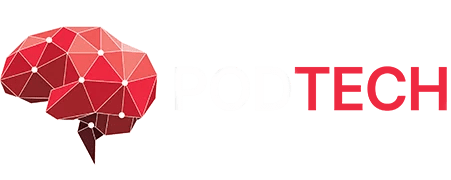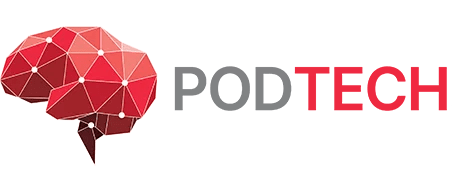Enhancing Security in Software Development: A Must for Modern Businesses
Table of Contents
- Introduction
- Understanding the SDLC and Its Impact on Software Security
- Secure Coding Practices for Enhanced Software Security
- Leveraging Security Testing Tools
- Strategies for Addressing Common Security Vulnerabilities
- The Role of DevSecOps
- Implementing Best Practices for Software Security
- Case Study: Elevating Software Security
- Conclusion: The Critical Importance of Software Security
Introduction
In an era where digital threats are evolving at an unprecedented pace, the importance of integrating security practices throughout the Software Development Life Cycle (SDLC) has never been more critical. For companies like Podtech, staying ahead of potential security breaches is not just about protecting data; it’s a comprehensive approach to safeguarding the trust and integrity of their software solutions. This blog delves into the essential security practices that should be ingrained in every stage of the SDLC, from secure coding practices to the adoption of DevSecOps principles.
Understanding the SDLC and Its Impact on Software Security
The SDLC is a systematic process used by software developers to design, develop, and test high-quality software. The traditional SDLC phases—planning, design, development, testing, deployment, and maintenance—are now being revisited with an added focus: security. Incorporating security by design, an approach that integrates security considerations from the outset, is crucial for developing robust software systems. This shift towards embedding security in the SDLC underscores the industry’s recognition of security not as an afterthought but as a prerequisite.
Secure Coding Practices for Enhanced Software Security
At the heart of secure software development lies the adoption of secure coding practices. These practices entail writing code with security in mind, aiming to prevent vulnerabilities from being introduced in the first place. Secure coding covers a range of principles, from validating input to ensure data is properly sanitized, to error handling that doesn’t disclose sensitive information. Following secure coding guidelines, such as those outlined by OWASP, helps developers avoid common pitfalls that could lead to security breaches.
Leveraging Security Testing Tools
Identifying and mitigating vulnerabilities early in the development process is essential to secure software deployment. To this end, security testing tools play a critical role. Static Application Security Testing (SAST) tools, for instance, analyze source code at rest to detect security vulnerabilities without executing the code. These tools can be integrated into the Integrated Development Environment (IDE), allowing developers to identify and rectify issues as they code. Dynamic Application Security Testing (DAST) tools test the application while it’s running, simulating attacks on its web applications and services to find vulnerabilities. By combining SAST and DAST tools, developers can cover a broader range of potential security issues, from code injection flaws to runtime malfunctions.
Strategies for Addressing Common Security Vulnerabilities
The Open Web Application Security Project (OWASP) Top 10 provides a continually updated list of the most critical security vulnerabilities to help developers prioritize security efforts. Addressing these vulnerabilities during the development process is vital. For instance, ensuring proper data validation can mitigate SQL Injection attacks, while adopting HTTPS can prevent Man-In-The-Middle (MITM) attacks. By familiarizing themselves with and taking proactive steps to address these common vulnerabilities, developers can significantly enhance the security of their applications.
The Role of DevSecOps
DevSecOps, a culture that integrates security practices within DevOps, ensures that security is a shared responsibility across the development, operations, and security teams. By incorporating security checks and tests into the Continuous Integration/Continuous Deployment (CI/CD) pipelines, DevSecOps facilitates early detection of vulnerabilities, making it easier to address them before software deployment. This not only speeds up the development cycle but also ensures that security considerations are baked into the product, rather than being tacked on at the end.
Implementing Best Practices for Software Security
To effectively integrate security practices into the software development life cycle, several best practices can be adopted by organizations like Podtech. First and foremost, regular security training for developers is crucial. This ensures that the team is up-to-date with the latest security threats and mitigation strategies. Incorporating security as a fundamental aspect of developer education fosters a culture where security is considered a default, not an option.
Case Study: Elevating Software Security
While specifics vary, many companies have realized the importance of integrating security practices into their SDLC. A notable example (hypothetical for confidentiality) involves a leading e-commerce platform that adopted a DevSecOps approach to address frequent security breaches. By integrating automated security tools into their CI/CD pipeline and conducting regular security training sessions for their development team, the company significantly reduced the incidence of security vulnerabilities. The proactive approach not only improved their security posture but also reduced the time and resources required to address security issues, demonstrating the value of integrating security practices throughout the SDLC.
Conclusion: The Critical Importance of Software Security
Incorporating security practices throughout the Software Development Life Cycle is no longer optional but a necessity in today’s digital age. For companies like PODTECH, adopting secure coding practices, leveraging security testing tools, addressing common vulnerabilities, and integrating a DevSecOps culture are essential steps towards achieving a robust security posture. By implementing these strategies, organizations can protect their assets, maintain customer trust, and navigate the evolving digital landscape with confidence.



